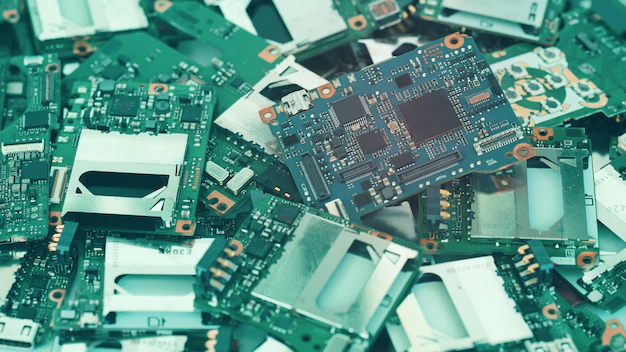Contact
Write to Us And We Would Be Happy to Advise You.
Do you have any questions, or would you like to speak directly with a representative?
By hqt

Printed circuit boards (PCBs) are complex electronic components used in a wide range of applications, from consumer electronics to medical devices. Ensuring the quality and reliability of every PCB assembly is an essential part of the manufacturing process. To achieve this goal, PCB assembly inspection standards must be met. In this blog, we will discuss how to go above and beyond the standard and achieve excellence in PCB assembly inspection.
PCB assembly inspection is an important part of the manufacturing process, as it helps to identify defects that can cause the product to fail. There are a variety of inspection standards that must be met, such as the IPC-A-610 standard, which is the most commonly used standard for electronic assembly. This standard outlines the criteria for acceptable workmanship and is used to ensure that all components meet the required specifications.
The IPC-A-610 standard is based on three categories: Workmanship, Component Assembly, and System Functionality. To ensure that all components are in compliance, the IPC-A-610 standard is divided into three classes: Class 1, 2, and 3. Class 1 is the highest level of acceptance, while Class 3 is the lowest.
Inspecting PCB assemblies to meet the IPC-A-610 standard requires the use of specialized tools and techniques. The most common tools used in PCB assembly inspection are X-ray machines, optical microscopes, and automated optical inspection (AOI) systems. X-ray machines are used to check for hidden defects in the components, while optical microscopes and AOI systems are used to inspect the components for visible defects.
Other tools and techniques used in PCB assembly inspection include functional testing, surface mount technology (SMT) inspection, and in-circuit testing (ICT). Functional testing is used to check the functionality of each component, while SMT inspection is used to check the placement of components on the board. ICT is used to ensure that the components are connected correctly.
In order to achieve excellence in PCB assembly inspection, there are certain guidelines that must be followed. First, the IPC-A-610 standard must be adhered to, and any deviations should be noted and addressed. Second, all components should be inspected for defects, and any defects should be documented and corrected. Third, all PCBs should be tested to ensure proper functionality before being shipped to the customer. Finally, all assembly processes should be documented and reviewed on a regular basis to ensure that they are being followed correctly.
Going above and beyond the IPC-A-610 standard is beneficial in a number of ways. It helps to ensure that all components meet the highest standards of quality and reliability, as well as reducing the number of defects and malfunctions. Additionally, it can help to reduce the cost of manufacturing by eliminating the need to rework or replace defective components. Finally, it can help to improve customer satisfaction by providing them with a product that meets their expectations.
Ensuring accurate and reliable quality control is essential to achieving excellence in PCB assembly inspection. To ensure accuracy, all components should be inspected and tested regularly to identify any potential defects. Additionally, all components should be tested for functionality on a regular basis to ensure that they are working as expected. Finally, all processes should be documented and reviewed on a regular basis to ensure that they are being followed correctly.
There are several steps that can be taken to improve the efficiency of PCB assembly inspection. First, the use of automated inspection systems can help to reduce the time and cost associated with manual inspection. Second, the use of advanced technologies such as X-ray machines and AOI systems can help to identify defects more quickly and accurately. Finally, the use of automated testing systems can help to reduce the time required for functional testing.
Automated inspection systems can offer a number of benefits for PCB assembly inspection. First, automated inspection systems are able to identify defects more quickly and accurately than manual inspection. Additionally, automated inspection systems can reduce the time and cost associated with manual inspection, as well as reducing the number of defects and malfunctions. Finally, automated inspection systems can help to improve customer satisfaction by providing a product that meets their expectations.
Using the latest technologies in PCB assembly inspection is beneficial in a number of ways. First, using the latest technologies can help to reduce the time and cost associated with manual inspection. Second, using the latest technologies can help to identify defects more quickly and accurately. Finally, using the latest technologies can help to improve customer satisfaction by providing a product that meets their expectations.
Achieving excellence in PCB assembly inspection standards can be challenging, but there are several steps that can be taken to ensure success. First, the use of automated inspection systems can help to reduce the time and cost associated with manual inspection. Second, the use of advanced technologies such as X-ray machines and AOI systems can help to identify defects more quickly and accurately. Finally, the use of automated testing systems can help to reduce the time required for functional testing.
PCB assembly inspection is an important part of the manufacturing process, as it helps to ensure the quality and reliability of the product. To achieve excellence in PCB assembly inspection, it is important to adhere to the IPC-A-610 standard and use advanced technologies such as X-ray machines and AOI systems. Additionally, it is important to ensure accurate and reliable quality control, improve the efficiency of PCB assembly inspection, and use automated inspection systems to reduce time and cost. By following these guidelines and using the latest technologies, it is possible to go above and beyond the PCB assembly inspection standard and achieve excellence.
Do you have any questions, or would you like to speak directly with a representative?